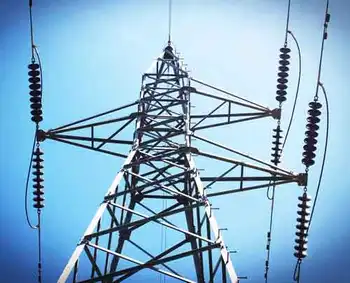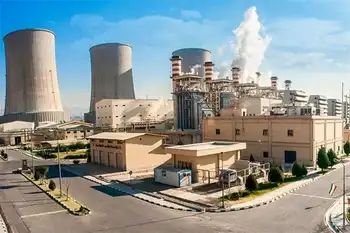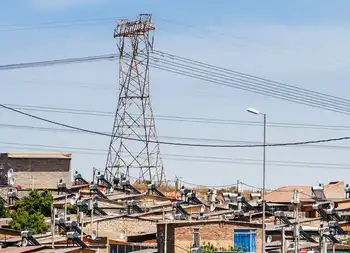Ohio firm promotes mercury capture technology for power plant
TWINSBURG TWP., OHIO - Imagine the Houston Astrodome filled floor to the ceiling with pingpong balls. Thirty of the balls have mercury inside. In one to two seconds, find and remove 27 of the mercury balls.
That's what it's like to try to remove mercury from power plant emissions.
It's difficult and costly.
Sorbent Technologies Corp., a Twinsburg firm tucked away in a warehouse off East Highland Road, claims to have developed a more economical and effective way of capturing the mercury.
But whether use of this new technology becomes commonplace in pollution control could depend on an upcoming announcement of the first federal limits on mercury emissions.
Company president Sid Nelson Jr. is worried that the Bush administration will not require utilities to sharply curtail mercury emissions from all plants in the near future.
"We have the right product in place at the right time," said the 46-year-old Nelson, who makes the pingpong ball analogy. "And there's a growing interest in what we're doing."
America's 410 coal-fired power plants, including 28 in Ohio, annually release about 50 tons of the toxic metal mercury. Texas is the No. 1 state for mercury emissions; Ohio is No. 2.
The U.S. Environmental Protection Agency announcement, which will be made around March 15, is not expected to set strict mercury limits for each power plant as is required under the federal Clean Air Act. What's expected instead is an industry-backed cap-and- trade system.
That will allow utility companies that don't reduce emissions to buy "pollution credits" from cleaner companies.
The EPA initially proposed cutting mercury emissions from coal- burning power plants by 90 percent by 2008. That proposal later was modified to a 70 percent cut in 2018. The emissions trading would delay reductions until at least 2025.
Lawsuits from environmental groups are expected following the mid- March announcement.
"Mercury is coming out," Nelson said. "The only question is how much and how fast."
Some states, he said, including New Jersey, Massachusetts and Connecticut, already have imposed stricter mercury reductions.
Sorbent Technologies relies on little-known materials called sorbents or adsorbents, which have the ability to capture and hold other substances on their surfaces. Sorbents are used in industry, medicine, agriculture and research to retain liquids and gases.
In power plants, a mercury-capturing sorbent would be injected into ducts before emissions enter a power plant's anti-pollution equipment.
Sorbent Technologies relies on brominated activated powdered carbon. The reaction of the bromine gas with carbon increases the carbon's ability to capture mercury. The carbon appears to work with different types and mixtures of coal.
The spent sorbents - with the mercury attached - would be gathered in the plant's electrostatic precipitators, which collect dust.
Nelson said a key advantage for utility companies is that the sorbent injection system can be cheaply installed.
The U.S. Department of Energy has estimated that removing mercury could cost utilities $5 billion a year.
But Nelson said his firm's technology can reduce that cost to about $500 million a year.
The company has received $3.6 million in Department of Energy funds and is in line for an added $3 million in federal research grants and $2 million in matching contributions from utility partners.
Last fall, Sorbent Technologies successfully completed a mercury- removal test at Detroit Edison's St. Clair Power Plant near Detroit.
The month-long, 24-hour-a-day test, using primarily low-sulfur Western coal, resulted in 94 percent of the mercury being removed.
That was "an unprecedented... and revolutionary total," Nelson said.
Scott Simons, of Michigan-based DTE Energy, said the Detroit Edison test produced "very encouraging results... and an excellent reduction in mercury."
But he cautioned that additional testing is needed before utilities will be convinced that Sorbent Technologies' system is commercially and technically viable.
"A lot more work needs to be done," he said.
American Electric Power Co., based in Columbus, is familiar with the test results and finds them "attractive... and intriguing," said spokesman Pat Hemlepp.
But he agreed that more full-scale testing is needed, especially to assure that the mercury removal doesn't have other impacts on the plants.
AEP intends to test Sorbent Technologies' materials this fall at its Conesville Plant near Coshocton.
Within the next two years, Sorbent Technologies is planning five full-scale demonstrations at plants in North Carolina and Illinois. Closer to home, the company is involved in a project to help Ohio University burn coal cleaner at its power plant.
The nearly operational $6.4 million project at the university's Lausche Heating Plant is expected to reduce sulfur dioxide emissions by 80 percent to 85 percent.
It will help save the university as much as $1 million a year in energy costs and enable the plant to continue to burn high-sulfur Ohio coal, said Mick Harris, the university's director of maintenance and operations.
The plant, with its three boilers, burns coal and natural gas to produce steam heat and hot water for 190 buildings in Athens.
The key ingredient in that project is another sorbent: Fluesorbent, a patented material that neutralizes the sulfur dioxide. The sulfur gas is absorbed into sponge-like material made of hydrated lime and perlite. That byproduct can be used as a fertilizer.
The Ohio Department of Development provided $4.5 million and Ohio University contributed $1.35 million toward the project. Sorbent Technologies invested $500,000.
The company has been working on its mercury removal methods for eight years, Nelson said.
The company, then known as Sanitech, was founded 20 years ago by Nelson's father, Sidney Nelson Sr., who formerly worked at Batelle Institute in Columbus and who is chairman of the board.
The younger Nelson joined the company in 1990 and took over as president in early 2001.
Sorbent Technologies is publicly traded, has 14 employees and had revenues of nearly $3 million in 2004.
Related News

Texas Weighs Electricity Market Reforms To Avoid Blackouts
HOUSTON - The Public Utility Commission of Texas is discussing major reforms to the state’s electricity market with the purpose to avoid a repeat of the power failures and blackouts in February 2021, which led to the death of more than 100 people and left over 11 million residents without electricity for days.
The regulator is discussing at a meeting on Thursday around a dozen proposals to make the grid more stable and reliable in case of emergencies. Proposals include paying power generators that are on standby when the grid needs backup, and requiring companies to pre-emptively buy capacity to meet…




